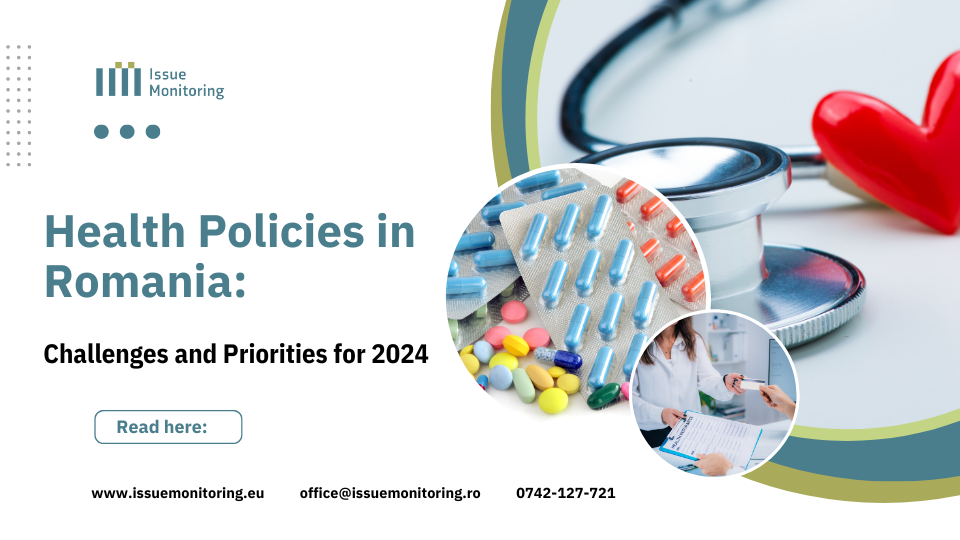
Romania’s healthcare sector is defined by a complex network of national strategies, public health programs, and reimbursement schemes that seek to address a broad spectrum of health issues. Despite a framework that encompasses multiple therapeutic areas and focuses on both preventive and curative care, the system struggles with several challenges, including underfunding, legislative inertia, and significant public health threats. This article will delve into the current state of the Romanian health sector, analyzing its strengths, limitations, and the future trajectory based on the latest national policies and strategic plans.
National Health Strategy and Key Policy Initiatives
Romania’s healthcare system is governed primarily by Law no. 95/2006 on healthcare reform. Although the law has been in place for nearly two decades, it has undergone various modifications to adapt to new challenges. Nevertheless, the law’s age and the rapid evolution of medical practices and public health needs have led authorities to call for a new legislative framework. In response, the Ministry of Health is preparing to introduce a new Health Law to redefine the strategic direction of the sector.
The National Health Strategy 2023-2030 serves as the backbone of Romania’s health policies. This strategy outlines priorities such as improving access to healthcare, reducing mortality rates from communicable and non-communicable diseases, and increasing the efficiency of healthcare delivery. It also aims to build a resilient healthcare system capable of addressing crises such as the COVID-19 pandemic, which exposed vulnerabilities in the existing infrastructure.
Specialized National Plans: A Holistic Approach
To complement the overarching strategy, Romania has developed specialized plans targeting key health issues. For instance, the National Plan to Prevent and Combat Cancer, which became effective in 2023, is a multi-faceted policy designed to tackle one of the country’s most pressing health challenges. It focuses on personalized medicine, early detection, and innovative treatment pathways, emphasizing a patient-centered approach.
Similarly, the National Vaccination Strategy 2023-2030 addresses gaps in immunization coverage, aiming to maintain Romania’s status as a polio-free country and eliminate other preventable diseases. Other targeted strategies include plans for tuberculosis control, HIV/AIDS prevention, and limiting healthcare-associated infections. Each of these strategies adopts a multi-disciplinary approach, bringing together stakeholders from public health, civil society, and the private sector to implement sustainable interventions.
The Role of National Health Programs
Romania’s healthcare programs are divided into two main categories: National Public Health Programs, managed by the Ministry of Health, and National Curative Health Programs, overseen by the National Health Insurance House (NHIH). The public health programs focus on preventive measures, such as vaccination and screening, while curative programs address treatment for conditions like cardiovascular diseases, cancer, and rare diseases.
The National Oncology Program, for instance, provides comprehensive cancer treatment and rehabilitation services, ensuring that patients receive the care they need without financial barriers. Meanwhile, the National Mental Health Program seeks to address the rising incidence of mental health disorders, providing support for diagnosis, treatment, and social integration.
Medicines: Authorization, Pricing, and Reimbursement
One of the most critical aspects of Romania’s healthcare system is the regulation of medicines. To enter the Romanian market, all medicinal products must obtain a marketing authorization either through the National Medicines and Medical Devices Agency (NAMMDR) or via the centralized European procedure. However, other pathways, such as parallel import or special needs authorizations, are available to ensure the availability of necessary drugs, especially during shortages.
The pricing of medicines in Romania is governed by strict regulations. The country uses a reference pricing system, comparing drug prices with other EU countries to establish the lowest price. This approach has led to challenges in ensuring the profitability of pharmaceutical companies, thereby contributing to periodic drug shortages. A clawback tax mechanism further complicates the landscape, requiring pharmaceutical companies to return a percentage of their revenues from reimbursed medicines to the state budget.
The inclusion of a drug in Romania’s reimbursement list is a complex process involving Health Technology Assessment (HTA) and negotiations with the Ministry of Health. Some drugs are included conditionally, based on cost-volume or cost-volume-result contracts, where manufacturers provide the medication at a reduced cost or for a defined group of patients. While this ensures financial sustainability, it can delay patients’ access to innovative therapies.
Financing the Health Sector: A Delicate Balancing Act
Romania’s health system is primarily funded through the National Social Health Insurance Fund, supplemented by state and local budgets. In recent years, European funds have also played a significant role. The National Recovery and Resilience Plan (NRRP) allocated EUR 2.45 billion to the health sector for infrastructure improvements, digitalization, and modernizing healthcare facilities. Additionally, the Operational Health Program provides EUR 5.88 billion for enhancing healthcare services and developing new hospital infrastructure.
Despite these funding sources, the healthcare system remains underfinanced. In 2024, the Ministry of Health received a budget of RON 18.89 billion, while the National Health Insurance Fund was allocated RON 62.4 billion. This budget covers not only day-to-day healthcare services but also cost-volume-result contracts aimed at increasing patient access to high-cost therapies. Yet, many healthcare providers still struggle with financial deficits, leading to disparities in service availability and quality across the country.
Persistent Challenges and the Path Forward
Although Romania has made significant strides in modernizing its health policies, several challenges persist. One of the most pressing issues is the shortage of healthcare professionals, particularly in rural areas. The distribution of doctors and nurses is uneven, with most specialists concentrated in urban centers. This imbalance results in limited access to healthcare for a large segment of the population, contributing to higher mortality rates in underserved regions.
Moreover, the fragmented healthcare infrastructure hampers the delivery of services. Many hospitals are outdated, lack essential equipment, and do not meet European safety standards. While the NRRP and other European funds are poised to address some of these issues, the implementation of large-scale infrastructure projects is slow, often hindered by bureaucratic red tape and inconsistent policy enforcement.
Another critical issue is the reimbursement and pricing system for medicines, which, while designed to ensure affordability, has led to unintended consequences. Frequent price updates and the clawback tax create an unstable market environment, discouraging pharmaceutical companies from introducing new products. This impacts patient access to innovative treatments and exacerbates drug shortages.
Opportunities for Reform and Modernization
Despite these challenges, there are several opportunities for reform that could transform the Romanian health sector. A new Health Law could provide a much-needed update to the legislative framework, incorporating modern practices and addressing the system’s existing inefficiencies. Additionally, the successful implementation of the National Health Strategy 2023-2030 and associated national plans could bring about significant improvements in patient outcomes, particularly in areas like cancer care and communicable disease prevention.
The increased availability of European funds presents another opportunity. Investments in digital health, such as the development of electronic health records and telemedicine services, could help bridge the gap between rural and urban healthcare. Furthermore, a reformed pricing and reimbursement system could attract more pharmaceutical investments, ensuring that Romanian patients have timely access to the latest therapies.
Conclusion
Romania’s health sector is at a crossroads. The country has developed a robust policy framework and secured substantial funding to support health system modernization. However, persistent challenges, including workforce shortages, outdated infrastructure, and a complex reimbursement system, continue to impede progress. By addressing these issues and leveraging the opportunities presented by European funding, Romania has the potential to build a more resilient, equitable, and efficient healthcare system that meets the needs of its population. Effective implementation of the National Health Strategy and the adoption of a new Health Law will be critical in steering the sector towards a brighter future.
Do you need a smarter solution to keep up with legislation, save time, and never miss an important update? Discover Issue Monitoring!


